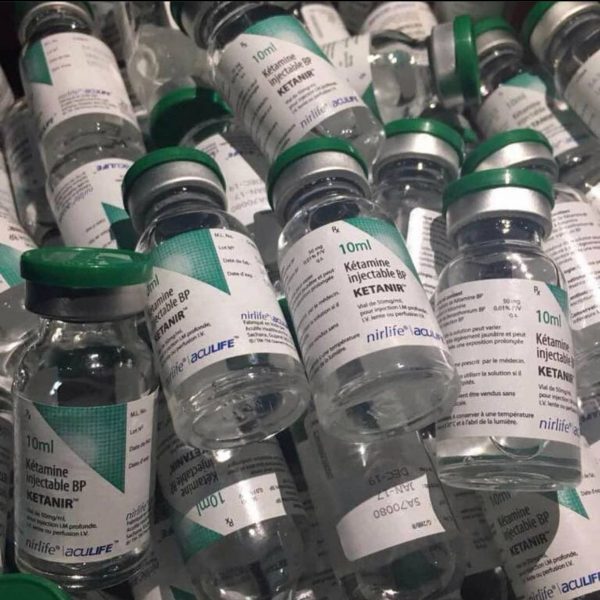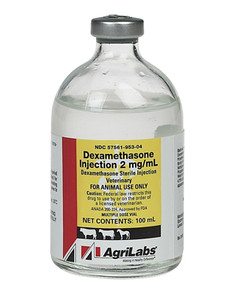xylazine For Horses – Xylazine HCl Injection
This page contains information on Xylazine HCl Injection for veterinary use.
The information provided typically includes the following:
- Xylazine HCl Injection Indications
- Warnings and cautions for Xylazine HCl Injection
- Direction and dosage information for Xylazine HCl Injection
Xylazine For Horses
This treatment applies to the following species:
- Cervidae
- Horses
Manufacturer: RXV(Xylazine)
100 mg/mL
Sedative and Analgesic
For Use in Horses and Cervidae (Fallow Deer, Mule Deer, Sika Deer, White-Tailed Deer and Elk)
ANADA 200-139, Approved by FDA
Description
Each mL contains 100 mg xylazine, (base equivalent), 0.9 mg methylparaben, 0.1 mg propylparaben, water for injection; citric acid and sodium citrate for pH adjustment to 5.5 ± 0.3.
Active Ingredient
| xylazine hydrochloride (Equivalent to 10% base) | 11.4% |
| INERT INGREDIENTS: | 88.6% |
| 100.0% |
Pharmacology
Xylazine HCl Injection (xylazine), a non-narcotic compound, is a sedative and analgesic as well as muscle relaxant. Its sedative and analgesic activity is related to central nervous system depression. Its muscle relaxant effect is based on inhibition of the intraneural transmission of impulses in the central nervous system. The principal pharmacological activities develop within 10 to 15 minutes after intramuscular injection in horses and Cervidae, and within 3 to 5 minutes following intravenous administration in horses.
A sleeplike state, the depth of which is dose-dependent, is usually maintained for 1 to 2 hours, while analgesia lasts from 15 to 30 minutes. The centrally-acting muscle relaxant effect causes relaxation of the skeletal musculature, complementing sedation and analgesia.
In horses and Cervidae under the influence of Xylazine HCl Injection (xylazine), the respiratory rate is reduced as in natural sleep. Following treatment with Xylazine HCl Injection (xylazine), the heart rate is decreased and a transient change in the conductivity of the cardiac muscle may occur, as evidenced by a partial atrioventricular block. This resembles the atrioventricular block often observed in normal horses.1,2,3,4 Partial A-V block may occasionally occur following intramuscular injection of Xylazine HCl Injection (xylazine). When given intravenously in horses, the incidence of partial A-V block is higher. Intravenous administration causes a transient rise in blood pressure in horses, followed by a slight decrease.
Xylazine HCl Injection (xylazine) has no effect on blood clotting time or other hematologic parameters.
Xylazine HCl Injection Indications
Xylazine HCl Injection (xylazine) should be used in horses and Cervidae (Fallow Deer, Mule Deer, Sika Deer, White-Tailed Deer and Elk) when it is desirable to produce a state of sedation accompanied by a shorter period of analgesia.
Horses: Xylazine HCl Injection (xylazine) has been used successfully as follows:
1. Diagnostic procedures – oral and ophthalmic examinations, abdominal palpation, rectal palpation, vaginal examination, catheterization of the bladder and radiographic examinations.
2. Orthopedic procedures, such as application of casting materials and splints.
3. Dental procedures.
4. Minor surgical procedures of short duration such as debridement, removal of cutaneous neoplasms and suturing of lacerations.
5. To calm and facilitate handling of fractious animals.
6. Therapeutic medication for sedation and relief of pain following injury or surgery.
7. Major surgical procedures:
a. When used as a preanesthetic to general anesthesia.
b. When used in conjunction with local anesthetics.
Cervidae: Xylazine HCl Injection (xylazine) may be used for the following:
1. To calm and facilitate handling of fractious animals.
2. Diagnostic procedures.
3. Minor surgical procedures.
4. Therapeutic medication for sedation and relief of pain following injury or surgery.
5. As a preanesthetic to local anesthesia. Xylazine HCl Injection (xylazine) at the recommended dosages can be used in conjunction with local anesthetics, such as procaine or lidocaine.
Xylazine HCl Injection Dosage And Administration
Horses:
1. Dosage: Intravenously – 0.5 mL/100 lbs body weight (0.5 mg/lb). Intramuscularly – 1.0 mL/100 lbs body weight (1.0 mg/lb). Following injection of xyaline for horses (xylazine hcl injection) the animal should be allowed to rest quietly until the full effect has been reached. These dosages produce sedation which is usually maintained for 1 to 2 hours, and analgesia which lasts for 15 to 30 minutes.
2. Preanesthetic to Local Anesthesia: xyaline for horses (xylazine hcl injection) at the recommended dosages can be used in conjunction with local anesthetics, such as procaine or lidocaine.
3. Preanesthetic to General Anesthesia: Xylazine HCl Injection (xylazine) at the recommended dosage rates produces an additive effect to central nervous system depressants such as pentobarbital sodium, thiopental sodium and thiamyl sodium. Therefore, the dosage of such compounds should be reduced and administered to the desired effect. In general, only 1/3 to 1/2 of the calculated dosage of the barbiturates will be needed to produce a surgical plane of anesthesia. Post-anesthetic or emergence excitement has not been observed in animals preanesthetized with xyaline for horses (xylazine hcl injection).
xyaline for horses (xylazine hcl injection) has been used successfully as a preanesthetic agent for pentobarbital sodium, thiopental sodium, thiamylal sodium, nitrous oxide, ether, halothane, glyceryl guaiacolate and methoxyflurane anesthesia.
Buy xylazine for Horses
Dosage Range:
Fallow Deer (Dama dama)-2.0 to 4.0 mL/100 lbs body weight (2.0 to 4.0 mg/lb).
Mule Deer (Odocoileus hemionus)-1.0 to 2.0 mL/100 lbs body weight (1.0 to 2.0 mg/lb).
Sika Deer (Cervus nippon)-1.0 to 2.0 mL/100 lbs body weight (1.0 to 2.0 mg/lb).
White-Tailed Deer (Odocoileus virginianus)-1.0 to 2.0 mL/100 lbs body weight (1.0 to 2.0 mg/lb).
Elk (Cervus canadensis)-0.25 to 0.5 mL/100 lbs body weight (0.25 to 0.5 mg/lb).
Following injection of Xylazine for horses and cervidae (xylazine hcl) the animal should be allowed to rest quietly until the full effect has been reached. These dosages produce sedation which is usually maintained for 1 to 2 hours and analgesia which lasts for 15 to 30 minutes.
Side Effects
Xylazine HCl Injection (xylazine for horses) in horses and Cervidae, used at recommended dosage levels may occasionally cause slight muscle tremors, bradycardia with partial A-V heart block and a reduced respiratory rate. Movement in response to sharp auditory stimuli may be observed.
In horses, sweating, rarely profuse, has been reported following administration. In Cervidae, salivation, various vocalizations (bellowing, bleating, groaning, grunting, snoring) on expiration, audible grinding of molar teeth, protruding tongue and elevated temperatures have also been noted in some cases.
Precautions:
Careful consideration should be given before administering to horses and Cervidae with significantly depressed respiration, severe pathologic heart disease, advanced liver or kidney disease, severe endotoxic or traumatic shock and stress conditions such as extreme heat, cold, high altitude or fatigue.
Do not use xyaline for horses (xylazine hcl injection) in conjunction with tranquilizers.
Analgesic effect is variable, and depth should be carefully assayed prior to surgical/clinical procedures. Variability of analgesia occurs most frequently at the distal extremities of horses and Cervidae. In spite of sedation, the practitioner and handlers should proceed with caution since defense reactions may not be diminished.
Xylazine Hcl For Horses:
Since an additive effect results from the use of Xylazine HCl Injection (xylazine) and the barbiturate compounds, it should be used with caution with these central nervous system depressants. Products known to produce respiratory depression or apnea, such as thiamylal sodium should be given at a reduced dosage and, when injected intravenously, should be administered slowly. When intravenous administration of Xylazine HCl Injection (xylazine) is desired, avoid perivascular injection in order to achieve the desired effect. Studies have shown negligible evidence of tissue irritation, however, following perivascular injection of xylazine.
xylazine Horse
Intracarotid arterial injection should be avoided. As with many compounds, including tranquilizers, immediate violent seizures followed by collapse may result from inadvertent administration into the carotid artery. Although the reaction with Xylazine HCl Injection (xylazine) is usually transient and recovery may be rapid and complete, special care should be taken to assure that the needle is in the jugular vein rather than the carotid artery.
Order xylazine Hcl For Horses for sale
Bradycardia and arrhythmia in the form of incomplete atrioventricular block have been reported following xylazine administration. Although clinically the importance of this effect is questioned,1,2,3,4 a standard dose of atropine given prior to or following xylazine will greatly decrease the incidence.
xylazine Hcl for sale
Sedation for transport is most successful if actual transportation is begun after the full effect of the drug has been reached and the animal’s stability is maintained while standing. In addition, it should be noted that animals under the influence of xylazine can be aroused by noise or other stimuli and this may increase the risk of injury.











Tracey Larose –
Thank you, I just got the xylazine order, but I’m also worried about the dosage due to the breed I have. Can you please help me out?
Mark Taylor –
Thanks for the delivery, just received the package of xyalazine I ordered for. It’s been a while since I’ve been short on xyalazine